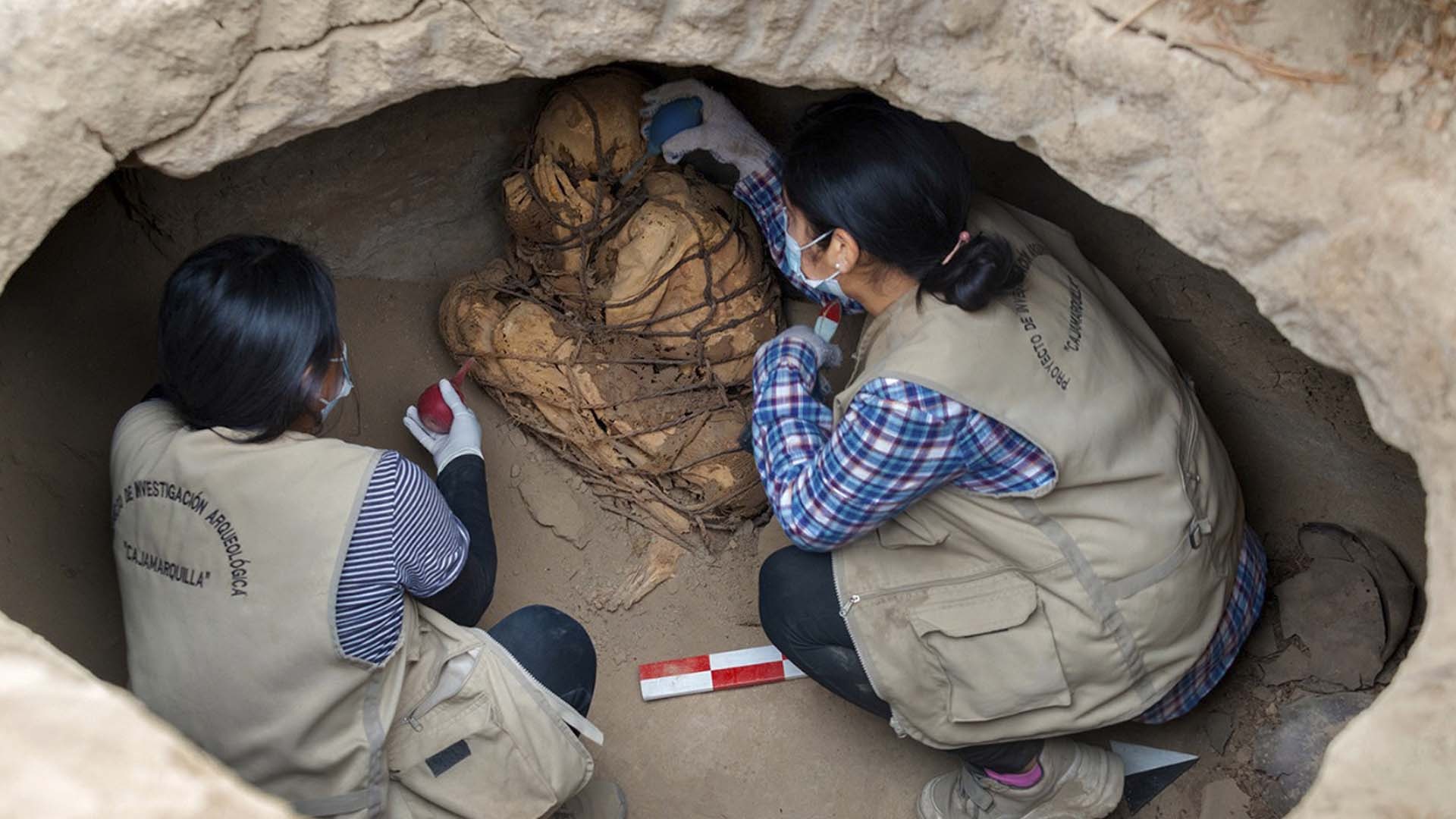
Mummy up to 1200 years old was discovered in Peru
A pre-Inca mummy of 1200 to 800 years old was found in Peru. This finding brought the interest of archaeologists and other related specialists since the discovered remains were tied with a rope, something never seen among other mummies.
Several researchers of the National University of San Marcos (UNMSM) were working in the archaeological site of Cajamarquilla, located in the district of Chosica, Lima, when they discovered this mummy along with a group of remains and objects. After the complete excavation of the inert body, they deciphered that it would be a person of masculine sex and that, by the moment of his death, it would be 18 to 22 years old.
Other characteristic that stands out is that the man had his hands on his face covering completely his face. According to the researchers responsible for said area, this is a funerary practice of the South of Peru.
Cajamarquilla is located at 25 kilometers of the center of Lima and was an important commercial, administrative, domestic, and residential center during the growth of Lima and Ychsma cultures. In the immediate vicinity of the remnants of this mud city, several excavations were carried out having as a result the finding of a mummy that stopped the archaeological and cultural scene in Peru.
Not the only findingThe mummy was in a funerary chamber. It was around three meters long and had a depth of 1.40 meters. Apart from the death man, it was also found remnants of an Andean guineapig, what they believed was a dog, and leftovers of corn and other vegetables.
“We discovered a mummy who was in an underground conic-shape funerary structure. When we saw its characteristics, it was a mummy tied with ropes. That is an unusual and unique characteristic in this funerary context”, commented Pieter Van Dalen, archaeologist responsible for the Cajamarquilla project to the AFP agency.
According to the UNMSM researchers, Cajamarquilla was built in years 200 B.C. and was inhabited up to year 1500, roughly. During its bloom, it was a very thriving city where 10 to 20 thousand people contributed for the development of its streets, markets, and temples.



